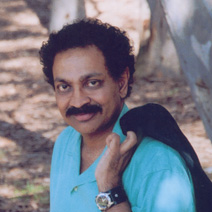More than 300 people crammed into the G-101 lecture hall on March 15 to see world-renowned neuroscientist Dr. Vilayanur S. Ramachandran. The UCSD professor visited Mesa College to lecture on his research relating to synesthesia and phantom limb syndrome.
The Cambridge graduate passionately explained his findings in a thick Scottish brogue mixed with his native Indian accent. Pockets of humor permeated his slideshow, providing a jovial atmosphere in which he described the complexities of neural impulses.
Ramachandran proved he is unfamiliar with quitting. His years of intense research dedicated to the human mind are a testament to his perseverance.
“If you think it’s crazy, you just haven’t figured it out,” said Ramachandran.
Indeed many thought synesthesia and phantom limb syndrome were rather insane phenomena before Ramachandran’s studies.
Synesthesia is the mental phenomenon where audio and visual cues are associated with specific colors. Those who have it report seeing vibrant colors when they hear music or see certain numbers as different hues.
Mesa College student Ben Halseth was most interested in the professor’s explanation of synesthesia.
“I thought the most interesting part of the lecture involved the idiosyncrasies of synesthesia,” said Halseth. “Like how there are differences between the concept of a number and the image of the number itself.”
This difference means that some people with synesthesia can see one color when analyzing the concept of a numeral, and another color while observing the specific shape of the digit.
Phantom limb syndrome, however, is Ramachandran’s claim to fame. The disorder afflicts amputees who have various motor and tactile sensations in their missing limbs.
Many of Ramachandran’s colleagues call his phantom limb experiments groundbreaking. He has made great progress in mapping out sensory regions of the brain, but the professor remains modest.
“[My work] has been over-publicized in the media,” said Ramachandran.
Phantom limb can be a seriously unpleasant sensation for those who still feel the ghostly presence of a lost body part. Excruciating pain affects two-thirds of people with the syndrome, while others afflicted claim their missing limb feels paralyzed.
His most famous experiment confirms the mind’s power over matter. He placed an amputee with one arm missing in what he refers to as a “mirror box.” The amputee was positioned with his missing arm tucked behind one of the mirrors, so that his remaining arm reflected onto the phantom.
The subject, who was experiencing great pain in his phantom limb, felt his agony diminish as he observed the presence of his hand in the mirror. This experiment showed that phantom limb syndrome was not just a physiological ailment, but a psychological one as well.
This ailment can be experienced not just in one’s missing arm or leg, but anywhere a body part is missing. Even a removed appendix can be subject to phantom limb syndrome.
Certain spots on the body can trigger sensation in one’s phantom limb, depending on exactly what is missing. The professor’s research of neural impulses helped map out sensory connections between seemingly unrelated body parts.
Ramachandran’s experiment that studied this involved tactile stimuli being applied to the face. The amputee could feel a specific region of his phantom limb being stimulated when a certain region of his face was touched.
Though relatively simple in design, Ramachandran’s experiments have greatly contributed to the scientific understanding of mental connections.
To find out more about his research, a list of Ramachandran’s publications can be found at http://cbc.ucsd.edu/ramapubs.html.

